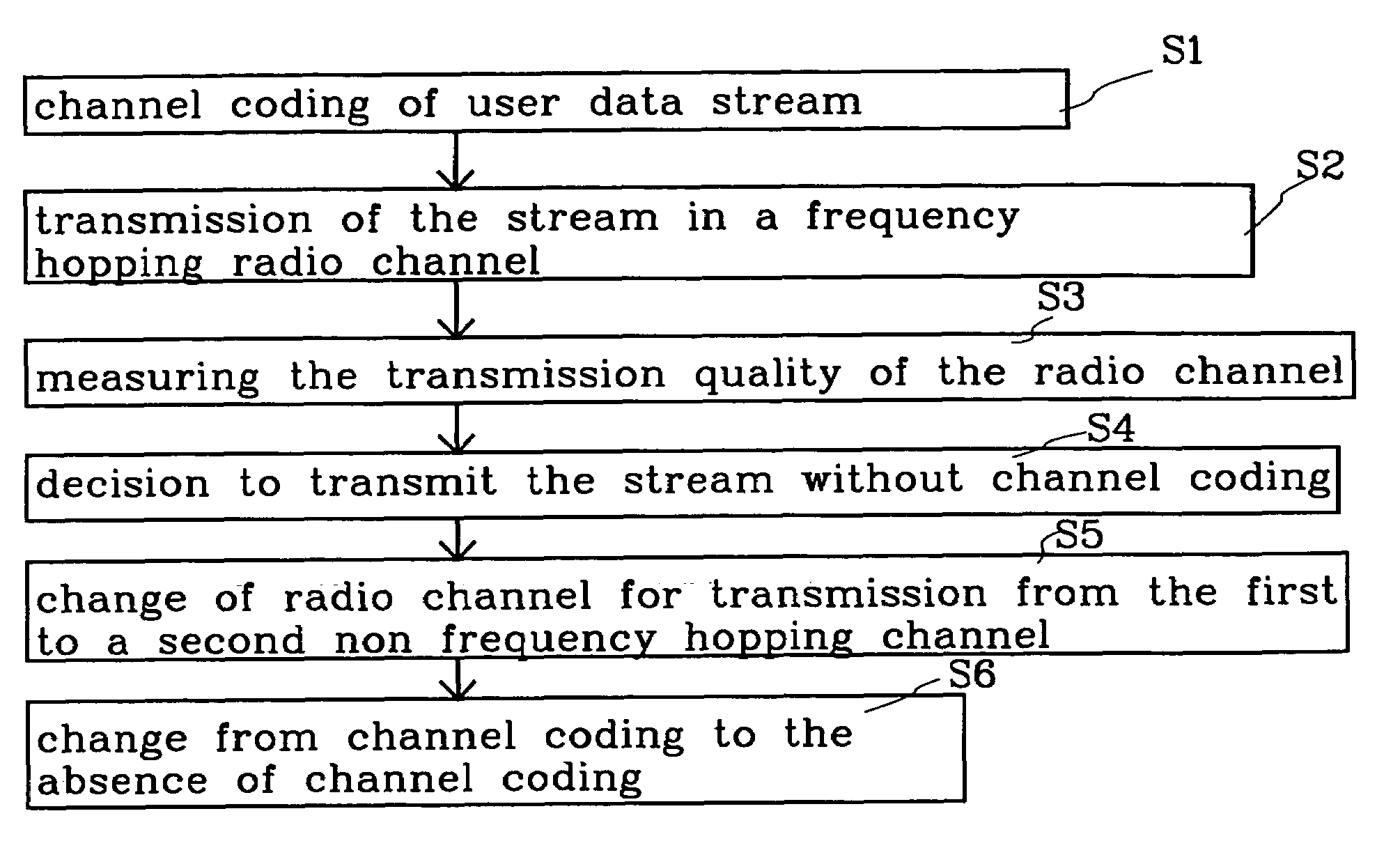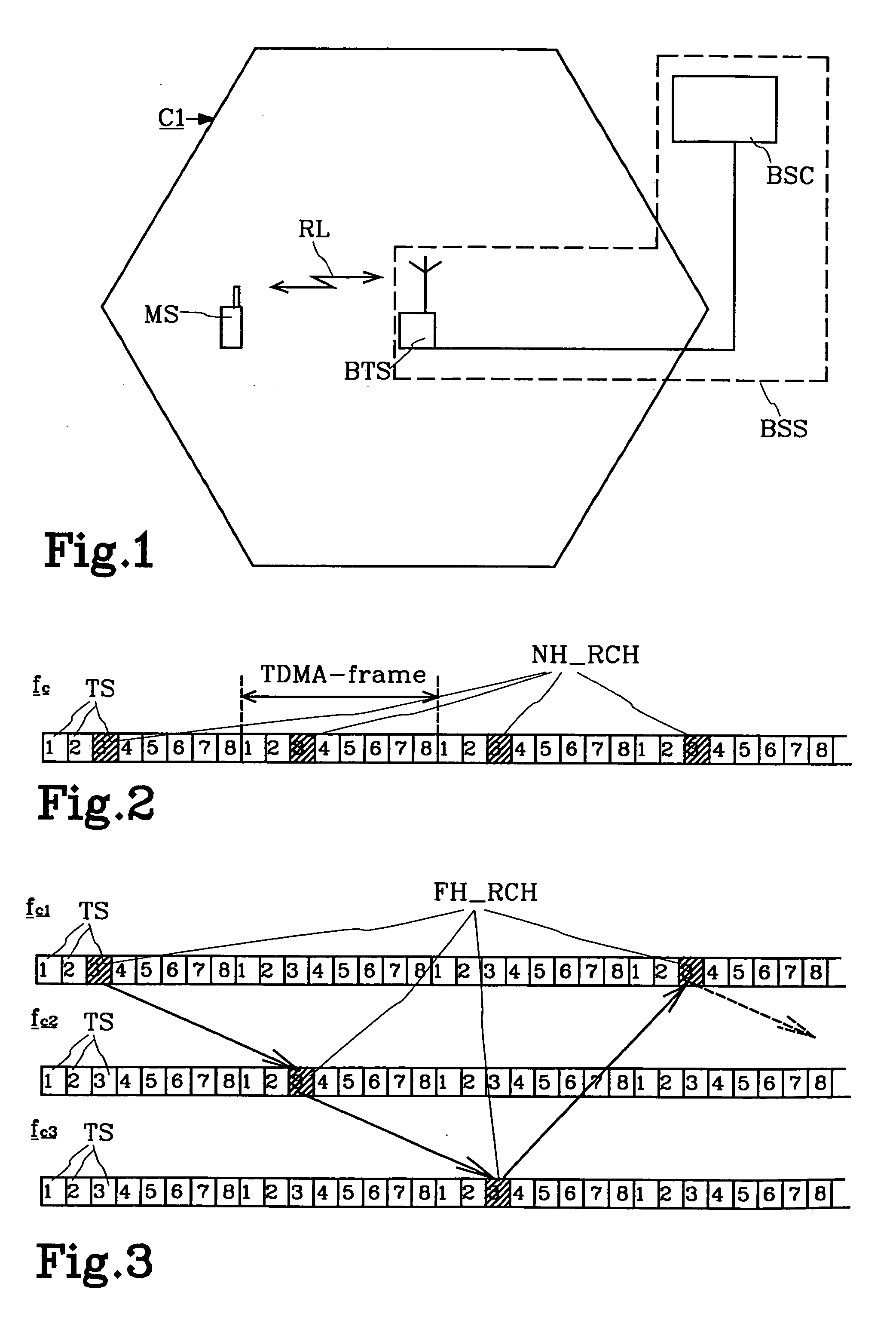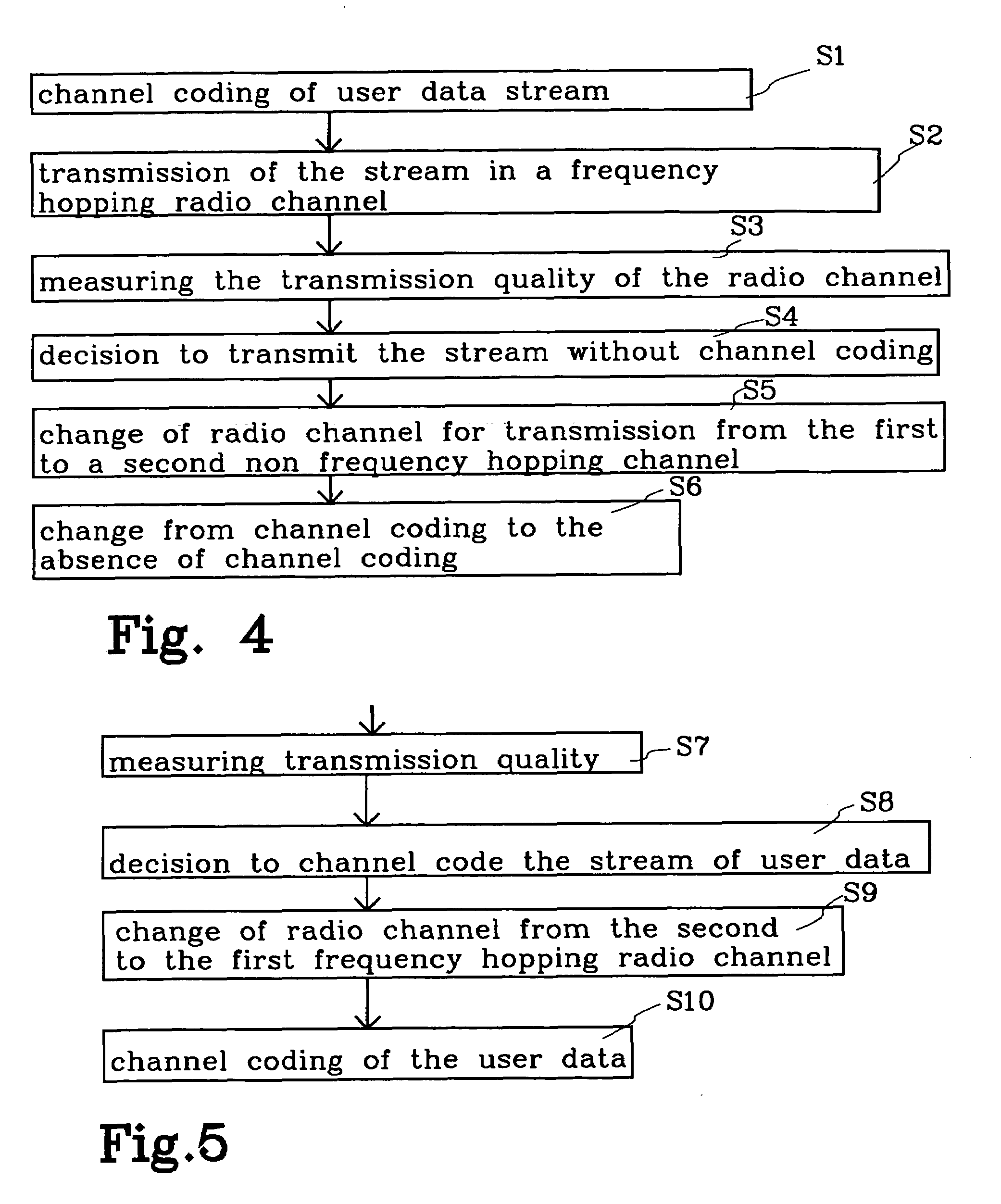Method and an arrangement relating to mobile radio systems with the possibility of switching channel coding schemes
a mobile radio and channel coding technology, applied in the field of mobile radio systems with the possibility of switching channel coding schemes, can solve the problems of increasing the likelihood of individual time slots being knocked out by a fading dip, data sent to a mobile station, and being located in a fading dip. , to achieve the effect of improving performance, facilitating fading, and effectively utilizing radio spectrum
- Summary
- Abstract
- Description
- Claims
- Application Information
AI Technical Summary
Benefits of technology
Problems solved by technology
Method used
Image
Examples
Embodiment Construction
[0037]FIG. 1 illustrates a limited part of a GSM-system PLMN relevant to the present invention. The illustrated network includes a base station controller BSC that is connected to the remainder of the mobile radio system via a mobile services switching centre MSC (not shown). The base station controller is connected to a base transceiver station BTS, which together form a base station system BSS. The base transceiver station serves mobile stations within a neighbouring geographical area, called cell C1, with radio communication. For the sake of simplicity, only one mobile station MS is shown in the cell C1 in FIG. 1.
[0038]Also indicated in FIG. 1 is a radio link RL on a radio channel between the mobile station MS and the base transceiver station BTS. Radio links RL are in duplex in the GSM-system. This means that a link has a pair of radio channel available, i.e. one radio channel for downlink, i.e. in a direction from the base transceiver station to the mobile station MS, and an op...
PUM
 Login to View More
Login to View More Abstract
Description
Claims
Application Information
 Login to View More
Login to View More - R&D
- Intellectual Property
- Life Sciences
- Materials
- Tech Scout
- Unparalleled Data Quality
- Higher Quality Content
- 60% Fewer Hallucinations
Browse by: Latest US Patents, China's latest patents, Technical Efficacy Thesaurus, Application Domain, Technology Topic, Popular Technical Reports.
© 2025 PatSnap. All rights reserved.Legal|Privacy policy|Modern Slavery Act Transparency Statement|Sitemap|About US| Contact US: help@patsnap.com



